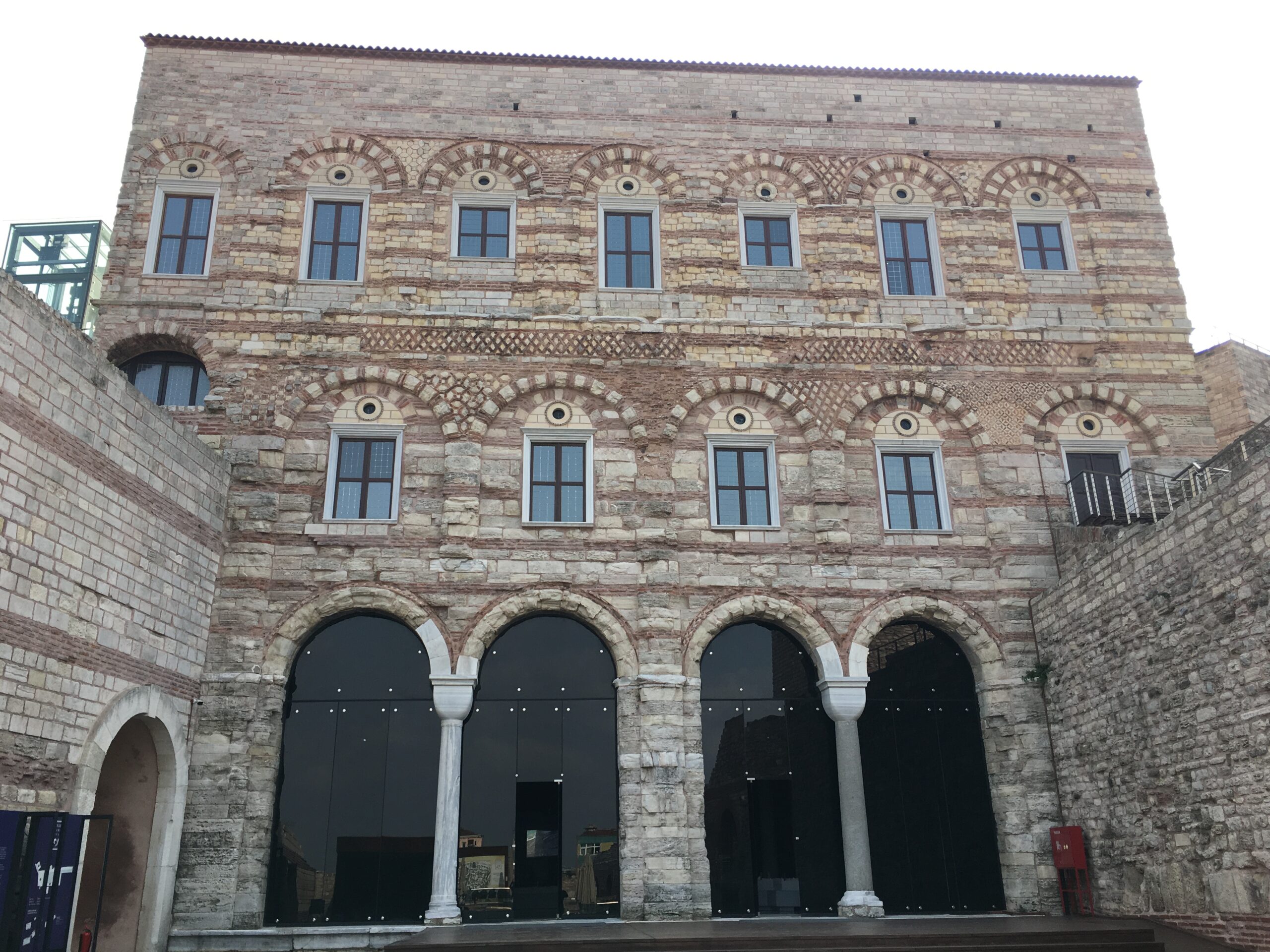Named as Tekfur Sarayı (Palace of the Sovereign) in Turkish, the Palace of Porphyrogenitus is one of the phenomenal buildings in Istanbul that has survived since the Byzantine period. The three-storey building made it to this day albeit the mistreatment of man and time, occasionally being reduced to a mere shell with only rubble remaining in between its walls. Although the palace went through several restorations in its lifetime, the final and most thorough one was started in 2006 by the Istanbul Municipality (İBB) and finished recently. Currently, it is the only Byzantine palace building that architecturally provides us with a glimpse (even if a limited one) of those majestic abodes of the Byzantine Emperors.
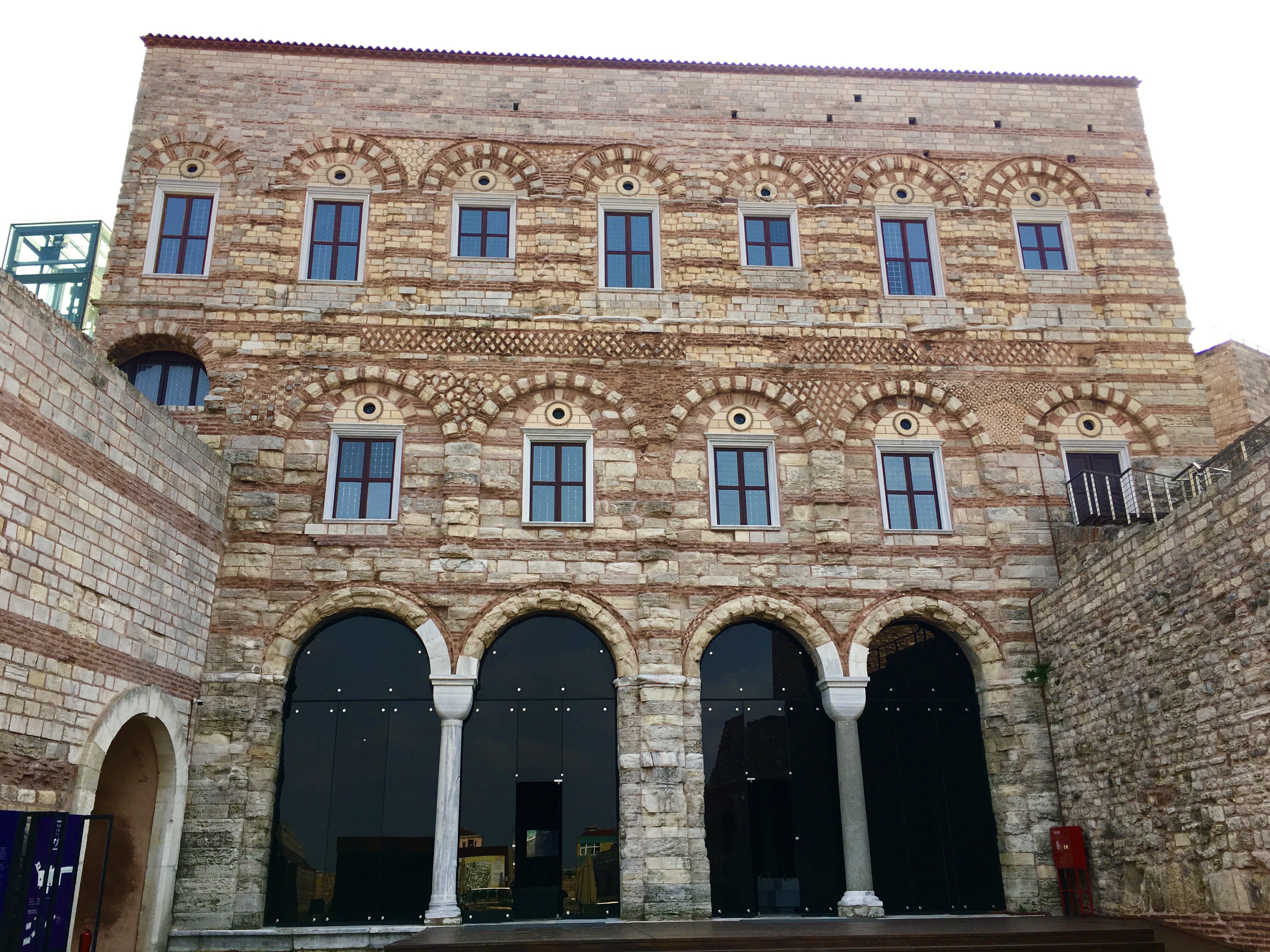
Palace of Blachernae which used to be nearby
The Palace of Porphyrogenitus (Tekfur Sarayı) is right next to the historic walls of Istanbul, between the Edirne Gate (Edirnekapı) and Eğri Gate (Eğrikapı, meaning the Crooked Gate in Turkish). Seeing it so close to the walls, one can not help but wonder why a palace would be built at such a vulnerable location, adjacent to the fortifications of the city. Although the palace takes its name from the Byzantine emperor Constantine VII Porphyrogenitus who ruled in the 10thcentury, the exact time of the construction is unknown. Experts think that it was probably built in the late 13th or early 14th century and used during the last 200 years of the empire. The palace could be an annex to the nearby Palace of Blachernae which was used by Byzantine emperors as of the 12th century. The claim seems to be plausible since Byzantine palaces used to be complexes of numerous pavilions. A structure which was also adapted by the Ottomans in early palaces such as the Topkapı Palace.
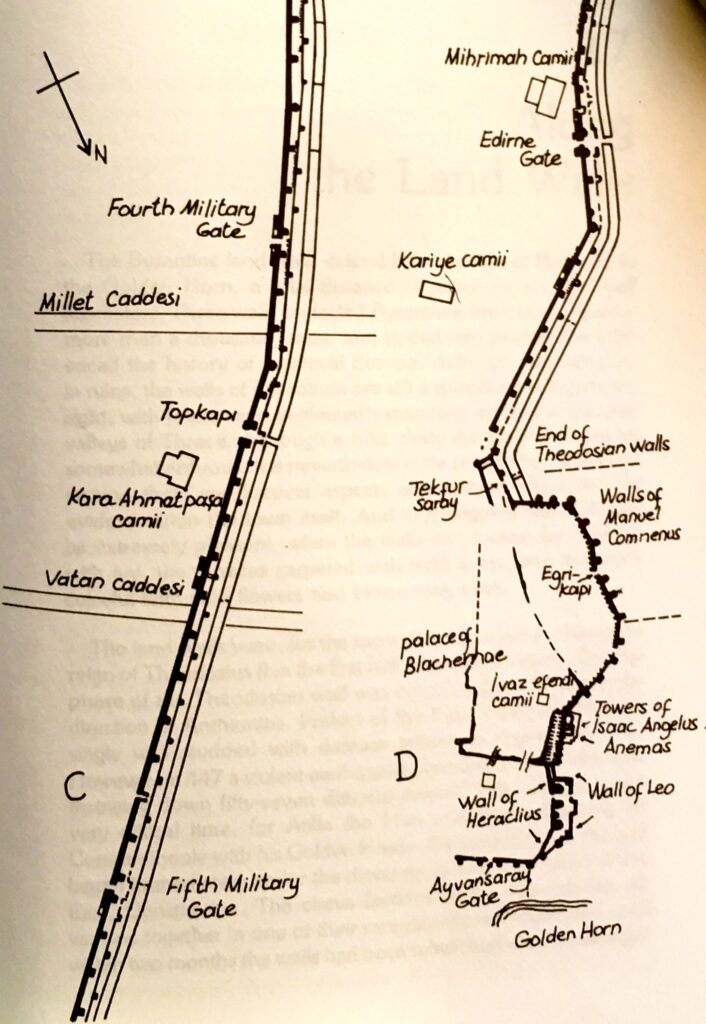
Source: Sumner-Boyd, H. and Freely, J., “Strolling Through Istanbul”,
p. 365.
The legendary Great Palace of Constantinople was reduced to a ruin, like the rest of the city, after the terrible pillage of the Fourth Crusade between 1204-1261. It was never fully restored after the Latin Conquest. Instead, Byzantine emperors started living in the Blachernae Palace complex on the Sixth Hill, even though this palace also took its share of the Latin Conquest. Maybe a palace by the land walls of the city in the north was considered to be safer because the Latins initially attacked from the sea.
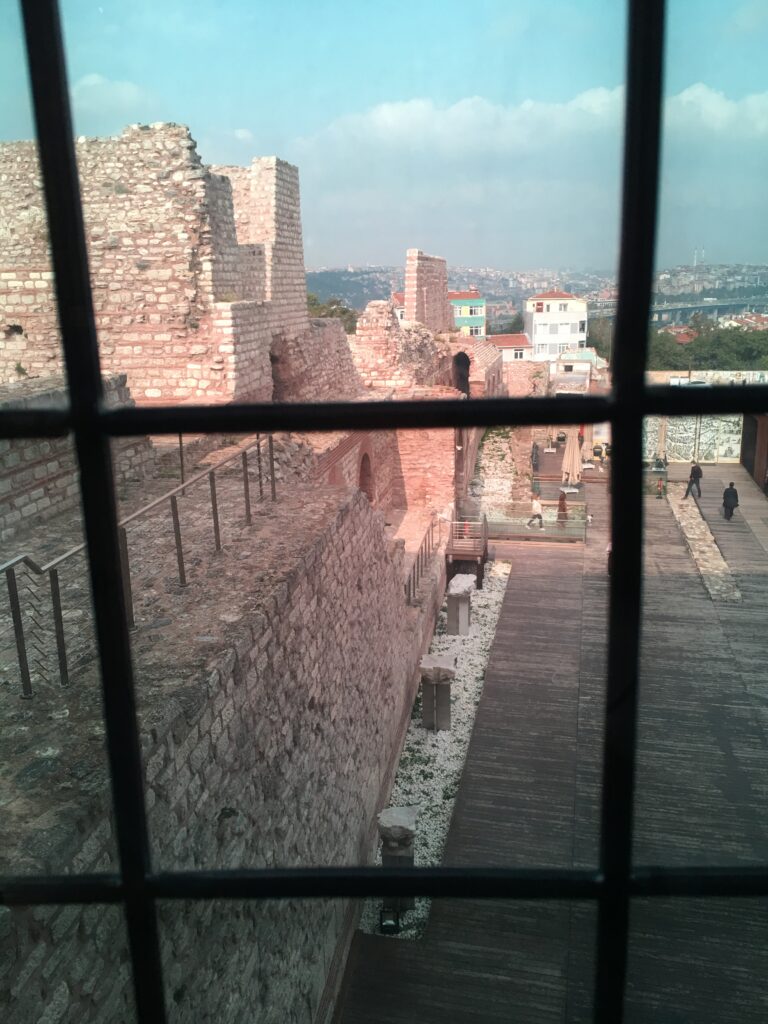
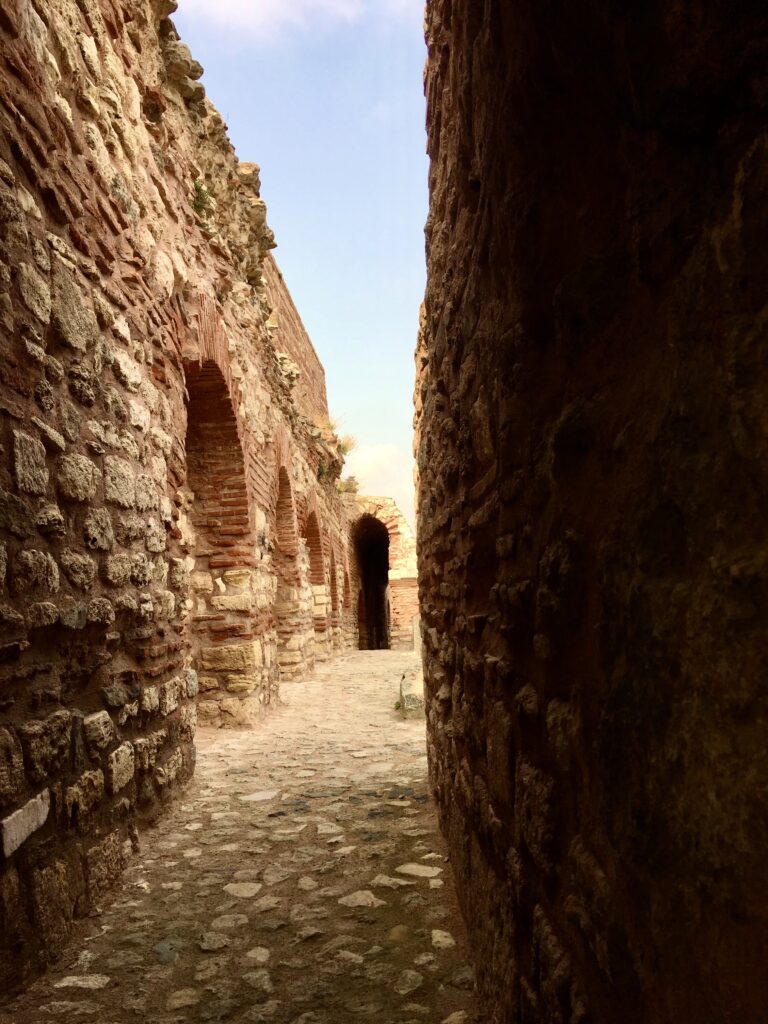
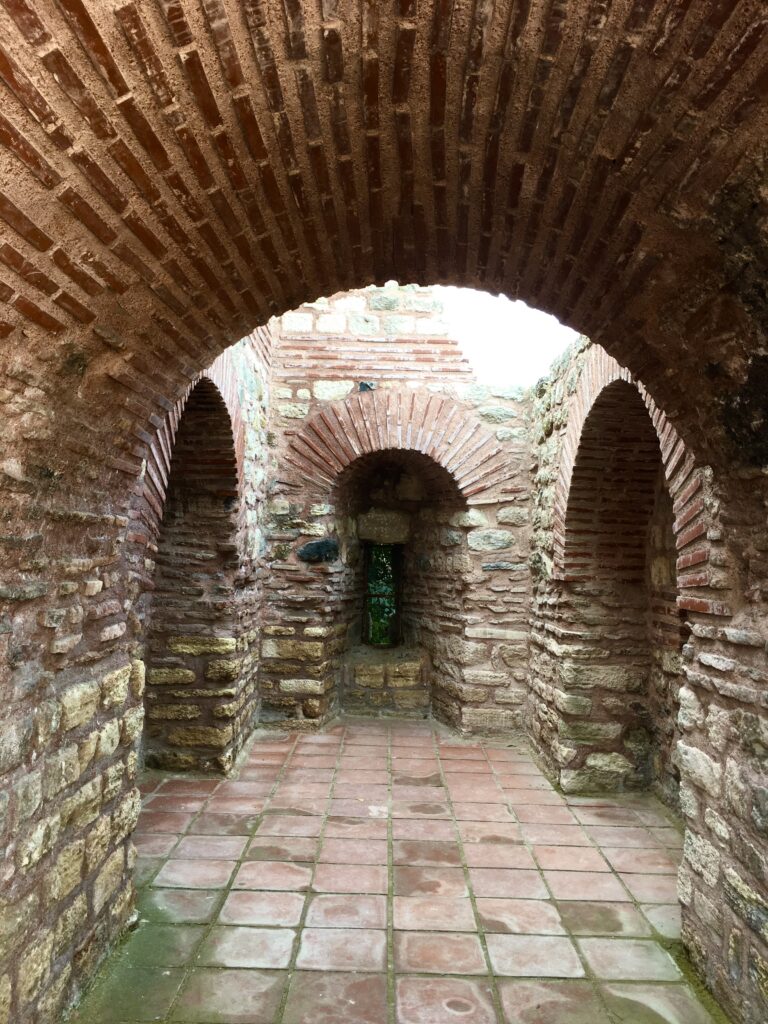
The location of the Palace of Porphyrogenitus is very interesting. It is between the outer and inner walls of the last part of the famous Theodosian Walls of Istanbul. Built during the reign of Emperor Theodosius II (401-450 A.D.), these walls are mostly the land walls that we can see in Istanbul’s Old City today. Nearly all the gates that were originally built in these walls are still in use.
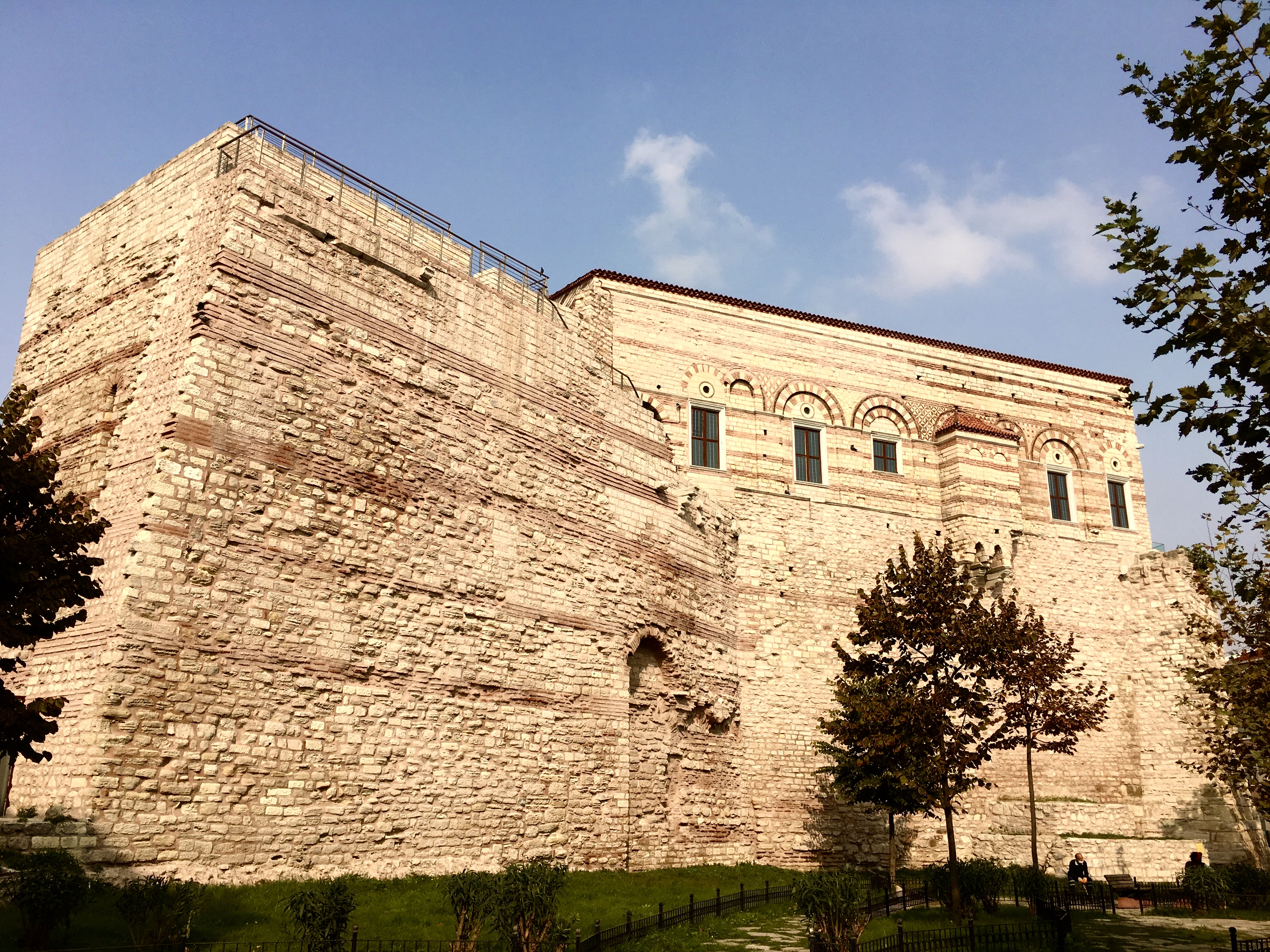
The building itself is very majestic with an arcade on the ground floor that opens onto the courtyard in front of it. The top floor of the building rises above the city walls and has windows on all sides. On this floor, there is a small chapel which is big enough for only one person. It is believed that this area of the building was part of the private quarters of the sovereign or his family. The decorations made of geometrical designs in red brick and white marble that we see especially on the courtyard side are characteristics of late period Byzantine architecture. On one side, the palace is connected to one of the towers of the Theodosian Wall.
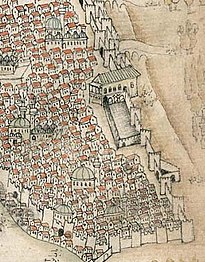
by Piri Reis (1521)
Source: www.wikipedia.org
After the Ottoman Conquest, the building was used for a variety of purposes at different times. During the 16th and 17th centuries it was used as stables for large animals such as elephants and giraffes. By the end of the 17th century, the animals were removed and the palace served as a brothel for some time. In the meantime, the roof of the palace gave way and the structure became a complete ruin. It was sheer chance that for some reason, the great Ottoman admiral, geographer and cartographer Piri Reis (1465-1553) had depicted the palace when it was intact and with a roof. This drawing became an important document for the restorations in the following centuries.
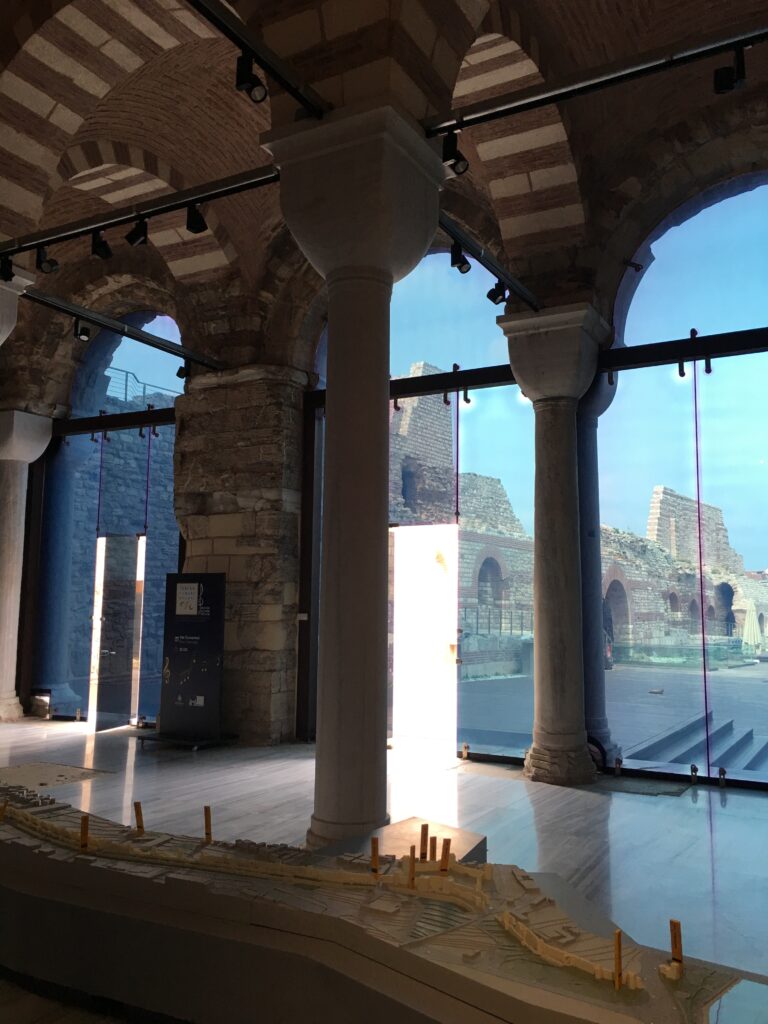
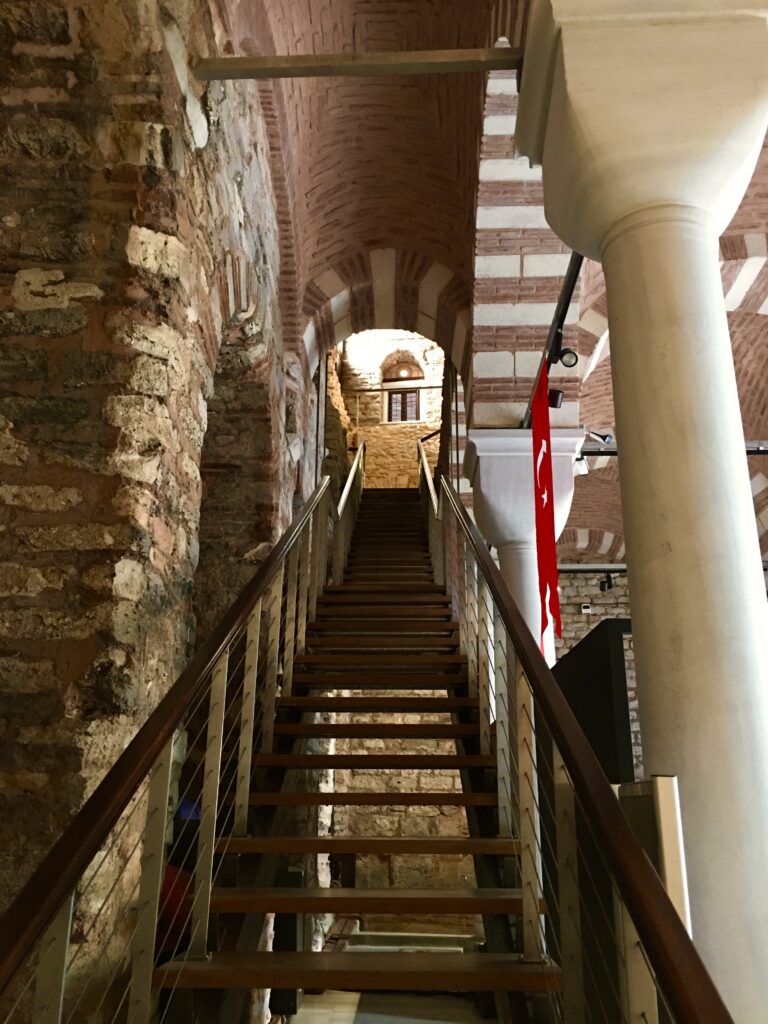
during the full restoration
The misuse of the palace was ended in 1719 when a pottery production facility was set up here. In time, the Tekfur Sarayı Pottery type acquired a fame of its own even though it was inferior to the İznik tiles and pottery. Becoming increasingly influenced by contemporary European objects and patterns, they nevertheless had a charm of their own. In time, the palace also became home to glass workshops. There had always been a concentration of glassware production and workshops around Eğrikapı as of the 17th century. During the reign of Sultan Mustafa III (r. 1757-1774), the producers were relocated inside the Tekfur Palace, where they co-existed with pottery producers. The place became so important in bottle and glass production that the name of the avenue on which the palace stands became Şişehane Cad. (“Bottle House Avenue”). However, the conditions of the building began to deteriorate again towards the end of the 18th century. Part of the Tekfur Palace served as a poorhouse for the needy Jews of Istanbul during the first half of the 19th century. Interestingly, around 1860, the American missionary Cyrus Hamlin considered this place for the future Robert College. He gave up the project in favour of the College’s (currently Boğaziçi University) ultimate location at Rumeli Hisarı, on the Bosphorus.
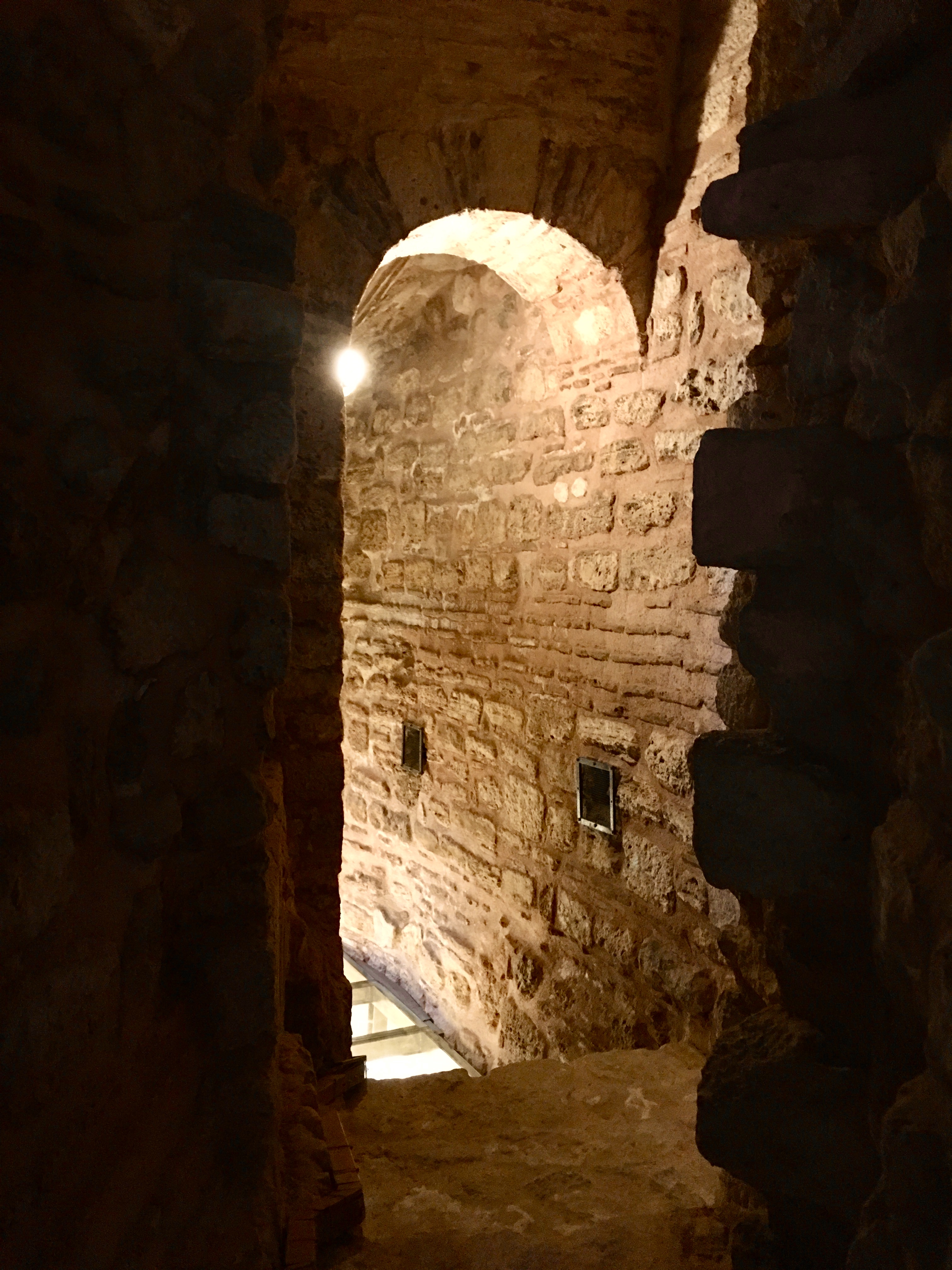
Glassware workshops fully continued their production here until 1920. Their numbers dwindled afterwards until they completely closed down in 1936. The palace building eventually became a complete ruin with only its outer walls remaining like a shell. According to rumours, the famous 86 carat, pear-shaped Kaşıkçı Diamond (Spoonmaker’s Diamond), that is currently on display at the Topkapı Palace, was found among the rubble on this site.

Source: TRT Haber 06/10/2019
The excavations that were carried out during the past 20-25 years revealed a considerable number of remains from the above-mentioned pottery and glass workshops. Currently, these are being displayed at the museum inside the fully restored Porphyrogenitus Palace.
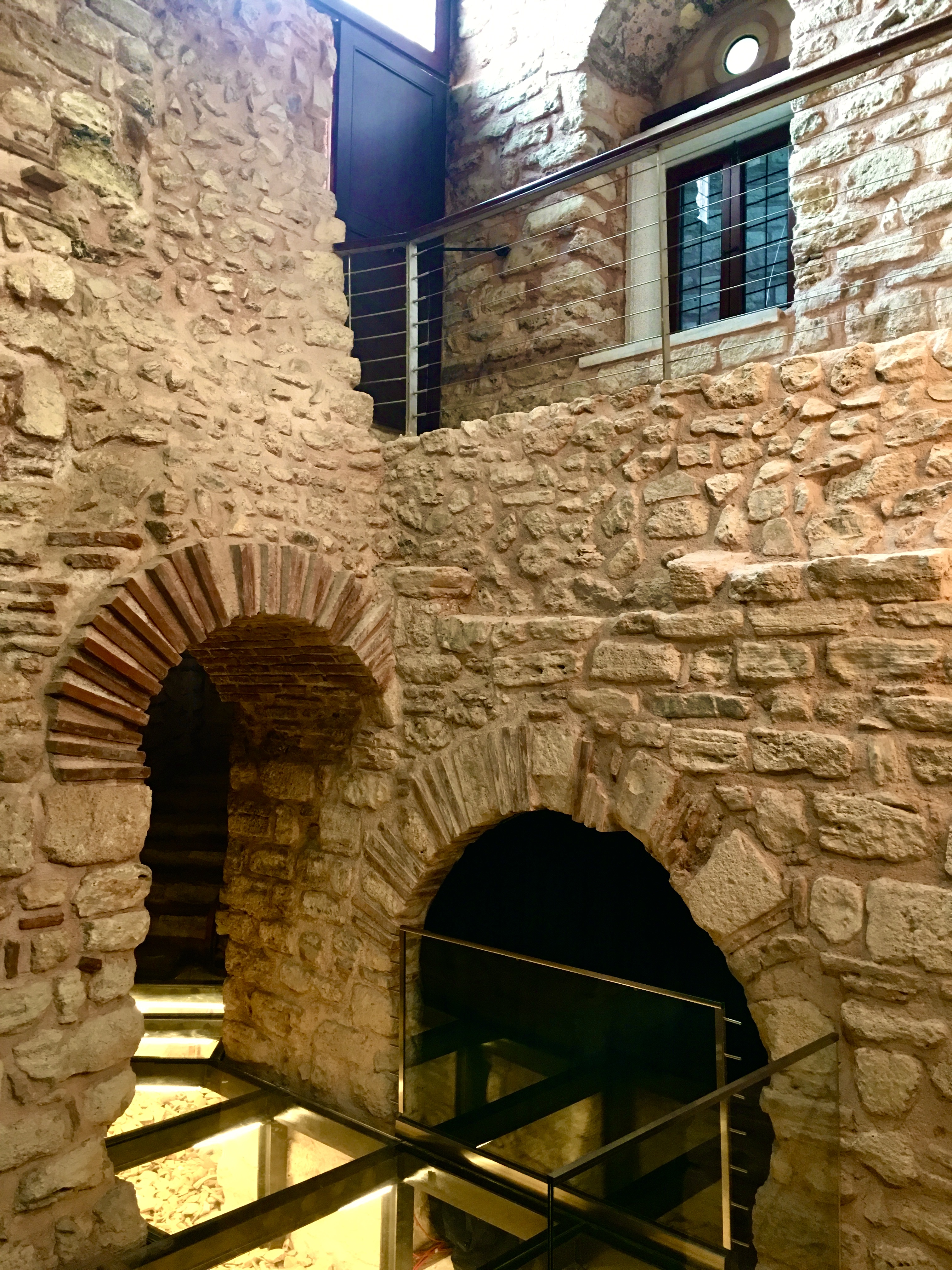
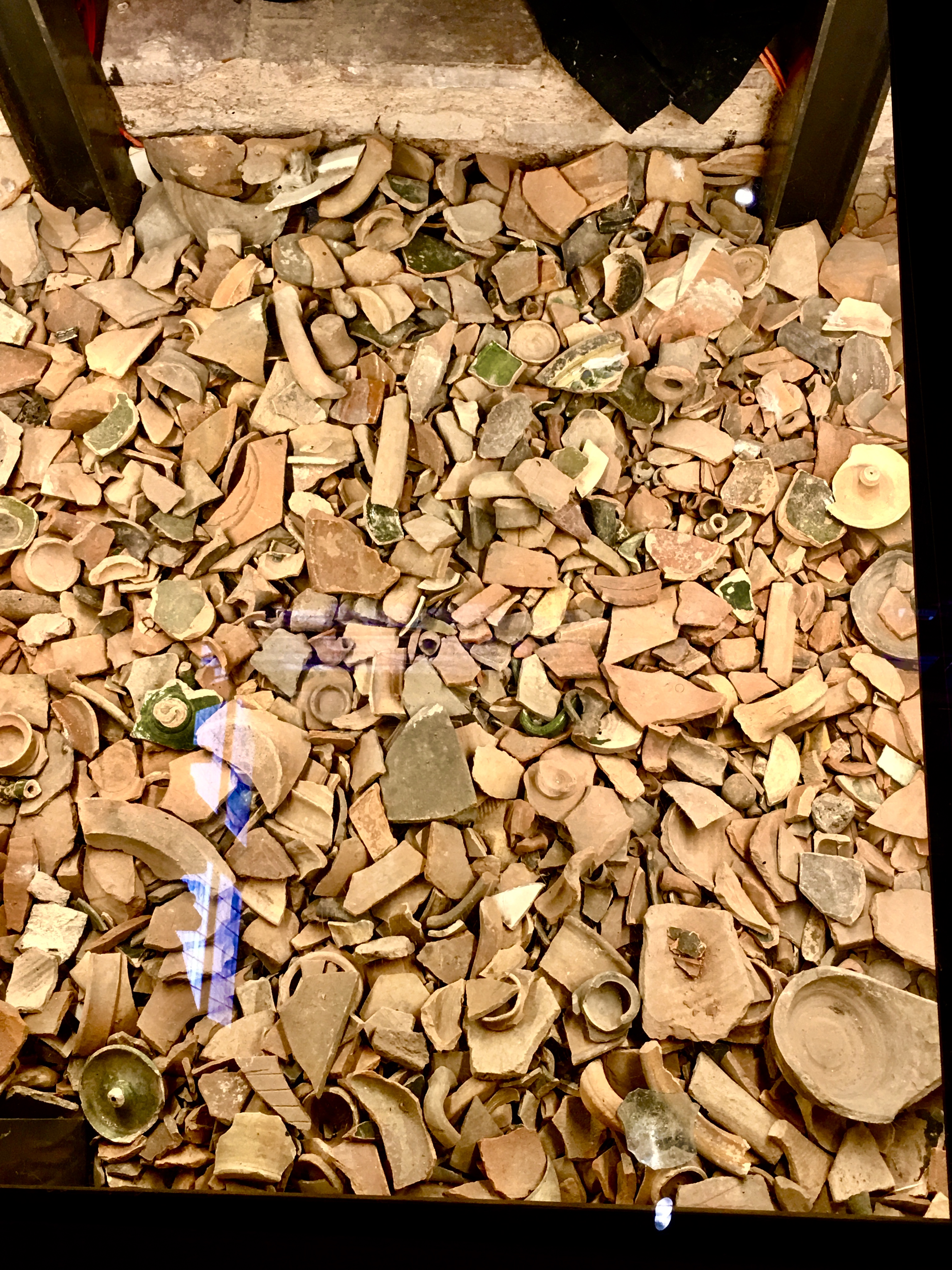
The Theodosian Walls end abruptly beyond the Tekfur Sarayı (Palace). This is the starting point of the Wall of Manuel Comnenus, built by the Byzantine Emperor Manuel Comnenus (r. 1143-1180). The wall went all the way down to the Golden Horn. However, because of the steepness of the land in this area, the wall did not have a moat like the previously built defence walls. This deficiency was compensated by making the walls more massive in width, measuring almost 5 metres in thickness at certain points. The towers of this wall were also stronger than the ones in the rest of the fortifications. Going towards the Golden Horn from the Tekfur Palace, Eğrikapı (the Crooked Gate) is between the 6th and 7th tower of the Manuel Comnenus Wall. The Turkish name Crooked Gate was given because the narrow lane that enters the city at this point has to make a detour around a mausoleum (türbe) which is situated almost directly in front of the gate, literally blocking the entryway. The mausoleum was built much later, in the 18th century by the Chief Imperial Eunuch Beşir Ağa for the then discovered burial place of Hazreti Hafız, a companion of the Prophet Muhammad. It was believed that he died on this spot during the first Arab siege of Constantinople in 674-678 A.D. There are several other tombs of Arab heroes from that campaign in the vicinity.
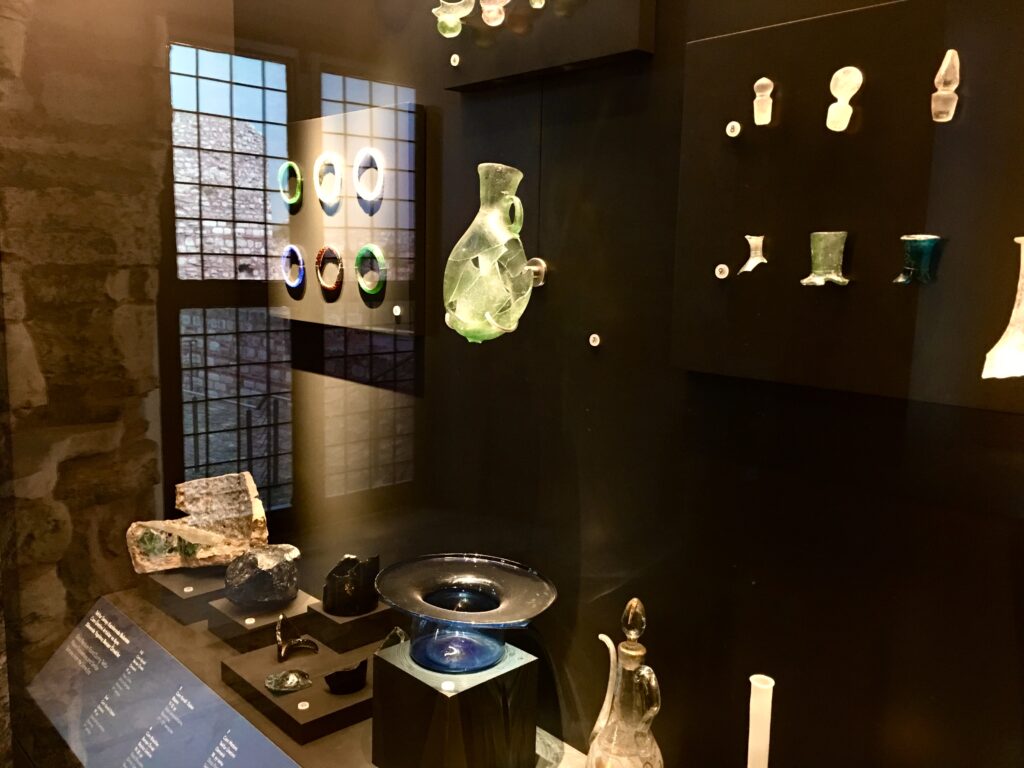
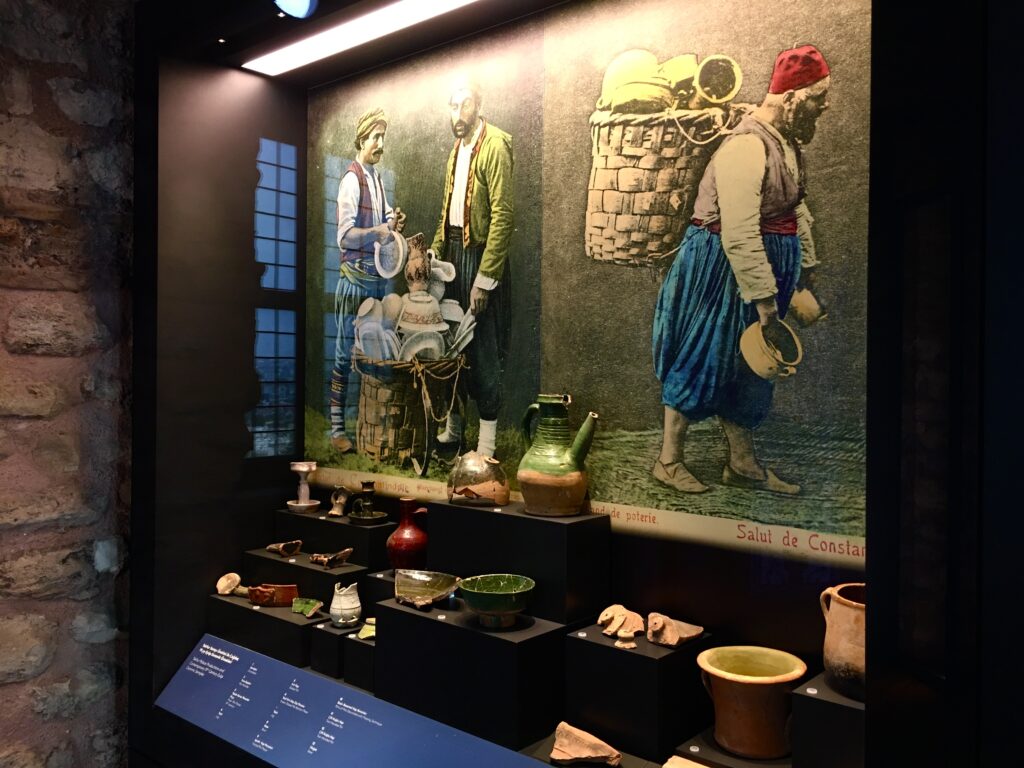
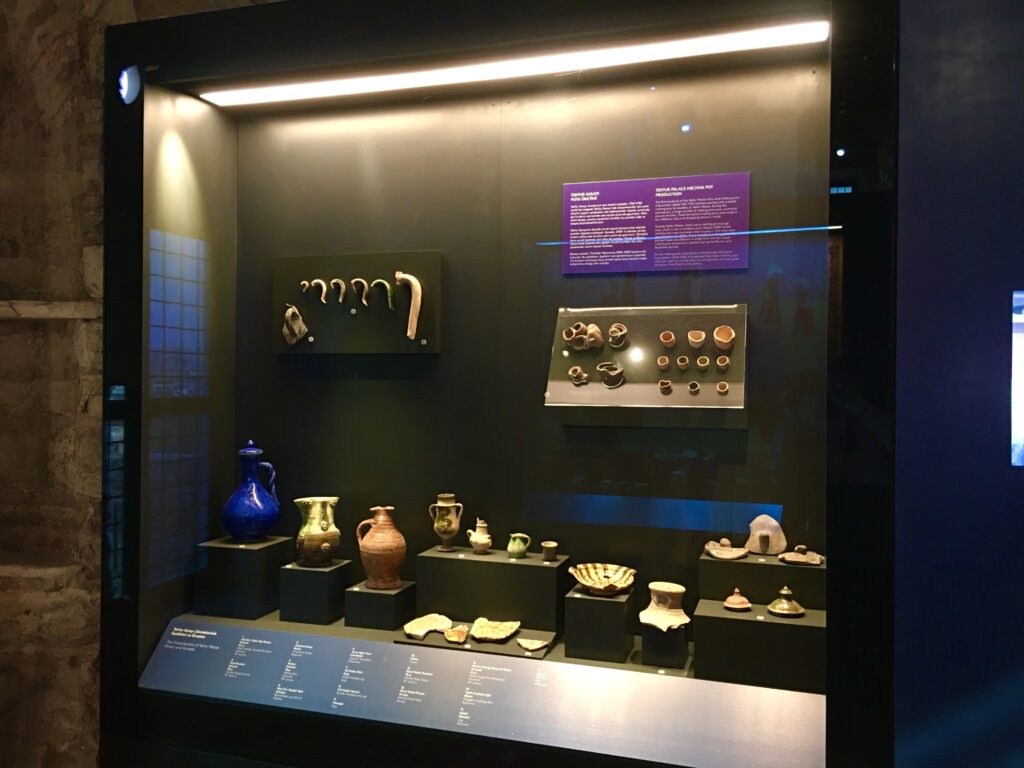
and similar samples from the same era
According to authorities, the original name of the gate Eğrikapı was Porta Kaligaria, the Gate of the Shoemakers, in Byzantine Constantinople. The gate has an important place in the history of the fall of the East Roman Empire. According to the Byzantine Greek historian and imperial courtier Georges Phrantzes, this is the place where the last Byzantine ruler, Emperor Constantine Dragases was seen alive during the Ottoman conquest. Phrantzes later wrote a history book on the fall of Byzantium in which he described the last night of the city and the Emperor. In his book he wrote that, on the night of May 28th, 1453 the Emperor, who was accompanied by Phrantzes, made his last visit to Hagia Sophia, after which he briefly stopped at the Palace of Blachernae. He assembled his household and the court members to say farewell and to ask for their forgiveness for any injustice or unkindness he might have done them. Phrantzes wrote in his book, “Who could describe the tears and groans in the palace? Even a man of wood or stone could not help weeping.” The Emperor then left the Palace and rode to the Gate of Kaligaria (Eğrikapı) with Phrantzes where he dismounted and climbed one of the towers nearby. Sounds of the Turkish army preparing for the final and lethal attack outside the city walls could be heard. Then, Phrantzes and Emperor Constantine Dragases said goodbye to each other. The Emperor rode off to his command post on the Murus Bacchatureus (the northern stretch of fortifications between Topkapı and Edirnekapı). He died there the following morning, no doubt while fighting courageously for his city. However, now was the time in history when, the Great Eagle would do what was thought to be impossible after the numerous failed attempts, including his father’s, to capture this legendary city…
____________________________
Sources:
(1)- Sumner-Boyd, H. and Freely, J., “Strolling Through Istanbul”.
(2)- Freely, J., “Istanbul The Imperial City”.
